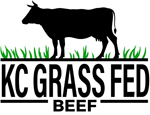As the world becomes increasingly health-conscious, food provenance has become a key topic. When it comes to beef, one phrase is dominating the conversation – “grass-fed.” While grass-fed hamburger might sound like another fleeting dietary fad, the science is there to back up the hype. Let’s explore the myriad of benefits it brings to the table, from boosting your health to protecting the planet and creative ways to introduce it into your diet.

Health Benefits of Grass-Fed Hamburger
Grass-fed hamburger, contrary to its grain-fed counterpart, is packed with an impressive nutritional profile that can have substantial health benefits.
-
Leaner and Lower in Calories
Grass-fed beef is naturally leaner, providing fewer calories for a comparable serving size. This lean meat could be a beneficial addition to weight control or weight loss diets.
-
Rich in Omega-3 Fatty Acids:
Grass-fed hamburger boasts a higher concentration of omega-3 fatty acids, known for promoting heart health and reducing inflammation. Omega-3 is usually associated with fish, but grass-fed beef is a commendable source, offering a great alternative for those not fond of seafood.
-
Loaded with Antioxidants:
Grass-fed beef is rich in vitamins A and E, both potent antioxidants that boost your immune system and protect cells from free radical damage. Additionally, it also contains higher levels of conjugated linoleic acid (CLA), a naturally occurring fat that has been linked to various health benefits, including cancer prevention and improved body composition.
Environmental Benefits of Grass-Fed Hamburger
The transition from conventional to grass-fed beef production can also serve as a powerful tool in combating environmental issues.
-
Reduced Greenhouse Gas Emissions:
Grass-fed cattle produce significantly fewer greenhouse gases as they require less fossil fuel than grain-fed ones. Instead of factory-farming, these animals are raised on pasture, which requires less energy input. We rotate our cows to a different pasture every day or two. This also gives them the natural sense of roaming, characteristic to how they used to roam when fences were not a thing.
-
Preserving Biodiversity:
Grass-fed ranches promote biodiversity, maintaining a balanced ecosystem. They also avoid the monoculture of corn or soy prevalent in feedlots, which disrupts local ecosystems and diminishes soil fertility.
-
Supports Soil Health:
Grazing cattle contribute to improved soil health by cycling nutrients and enhancing soil structure. This practice can be a vital part of regenerative agriculture, an approach aimed at restoring soil health and biodiversity, and capturing carbon in the soil to combat climate change.
Creative Ways to Use Grass-Fed Hamburger
Beyond its health and environmental benefits, grass-fed hamburger offers a versatile ingredient for a wide array of dishes.
-
 Burger Bliss:
Burger Bliss:Nothing beats a classic hamburger, and when it’s grass-fed, the taste is even better. The leaner meat produces a richer, deeper flavor that’s sure to satisfy your taste buds. Dress it with fresh lettuce, tomato, pickles, and a slice of your favorite cheese for an unforgettable meal.
-
Terrific Tacos:
For a Tex-Mex night, cook up some grass-fed hamburger for taco filling. Combine it with cumin, garlic, chili powder, and a touch of lime for an authentic flavor. Top with salsa, guacamole, and a sprinkle of cheese for a nutrient-rich, delicious dish.
-
Savory Stir-Fry:
Elevate your stir-fry game with grass-fed hamburger. Quickly fry it with an array of colorful veggies, such as bell peppers, broccoli, and snap peas, and then toss in your preferred sauce. Serve over rice or noodles for a wholesome, balanced meal.
In summary, grass-fed hamburger not only gives your dishes a flavor boost but also a nutritional upgrade. It supports sustainable farming practices, reducing environmental impact. There’s no better time than now to swap your conventional beef for grass-fed hamburger. From heartier burgers to delicious tacos and stir-fries, the culinary possibilities are endless. Taste the difference today, for your health, the environment, and the future of our planet.

 Burger Bliss:
Burger Bliss: